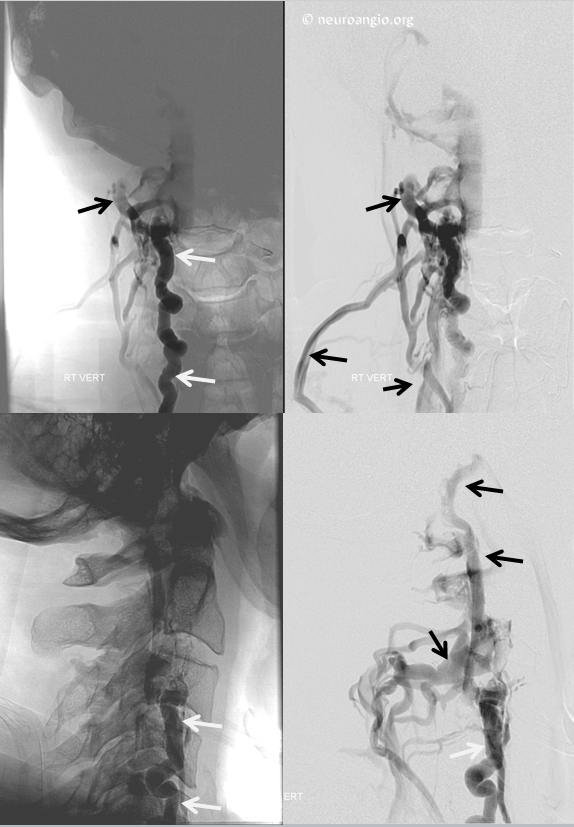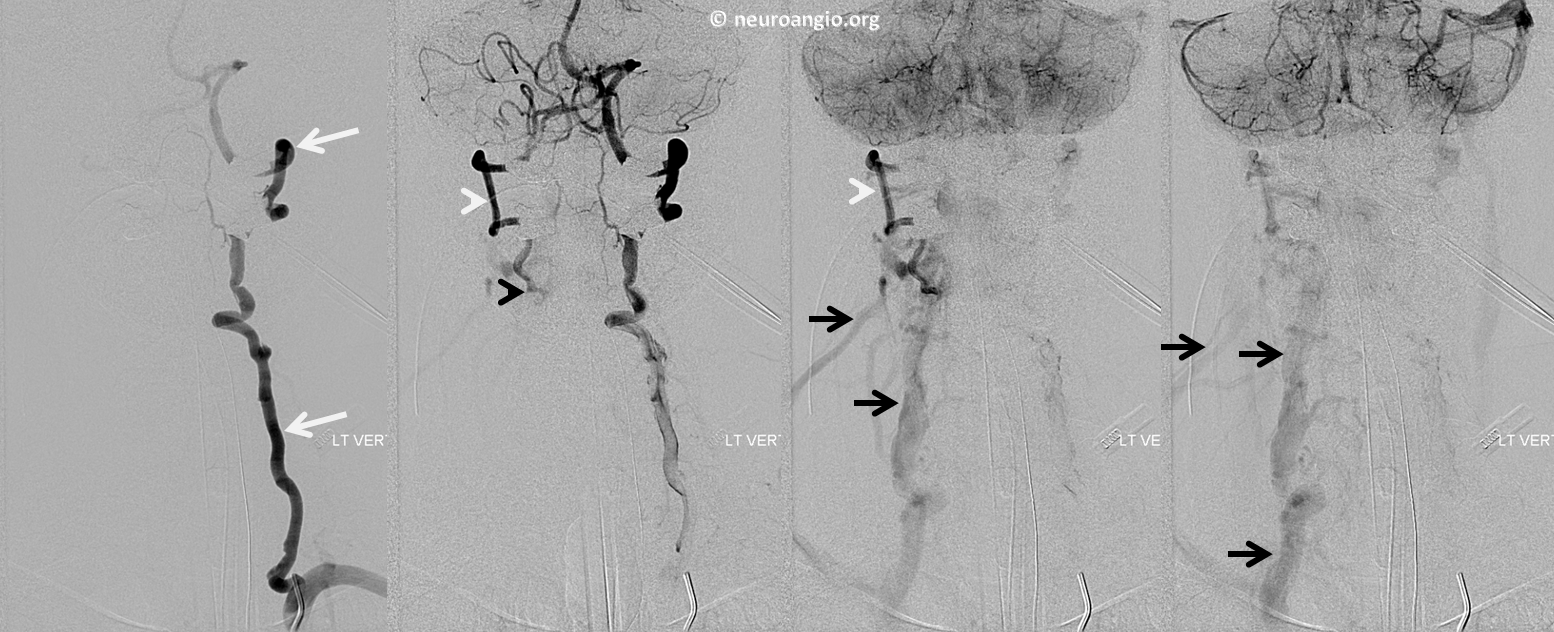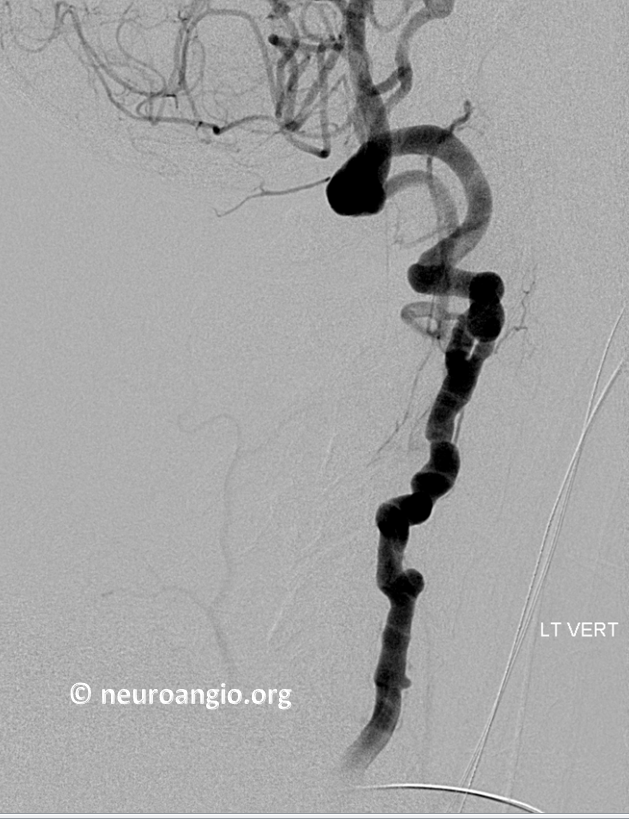Vertebral dissection is a much more rare cause of PT than carotid dissection (See Pulsatile Tinnitus Carotid Dissection and Arterial Dissection pages for more information). Vertebral artery is further away from the temporal bone than the carotid. The only instances where I have encountered proven vertebral dissection and PT association is with actual vertebral transection. This is when dissection extends through and through the vessel, causing actual rupture. Usually, this results in a vertebral-vertebral fistula between vertebral artery and adjacent vertebral venous plexus. Because most of us have two vertebral arteries, the majority of these rare transections do better than might be imagined. Stroke is rare, and some patients can harbor these high-flow, fierce-looking fistulas for years. Pulsatile tinnitus is produced by the tremendous amount of fistulous flow. Auscultation of the neck with a stethoscope is usually dramatic. A thrill can be palpable over the posterolateral neck as well. Treatment is usually by vertebral sacrifice. It is usually safe and highly effective.
Here is an angiogram of a patient with vertebral transection in setting of severe Fibromuscular Dysplasia (FMD). It is one of the causes of vertebral dissection. The vertebral artery is shown by white arrows, while venous plexus and cervical venous outflow is shown by black arrows

Contralateral vertebral (white arrows) injection shows “steal” with reversal of flow in the right vertebral artery (black arrows) distal to the transection. The transection point is marked by black arrowhead. Engorged cervical veins are shown by black arrows

Lateral view of left vertebral artery shows typical changes of FMD

